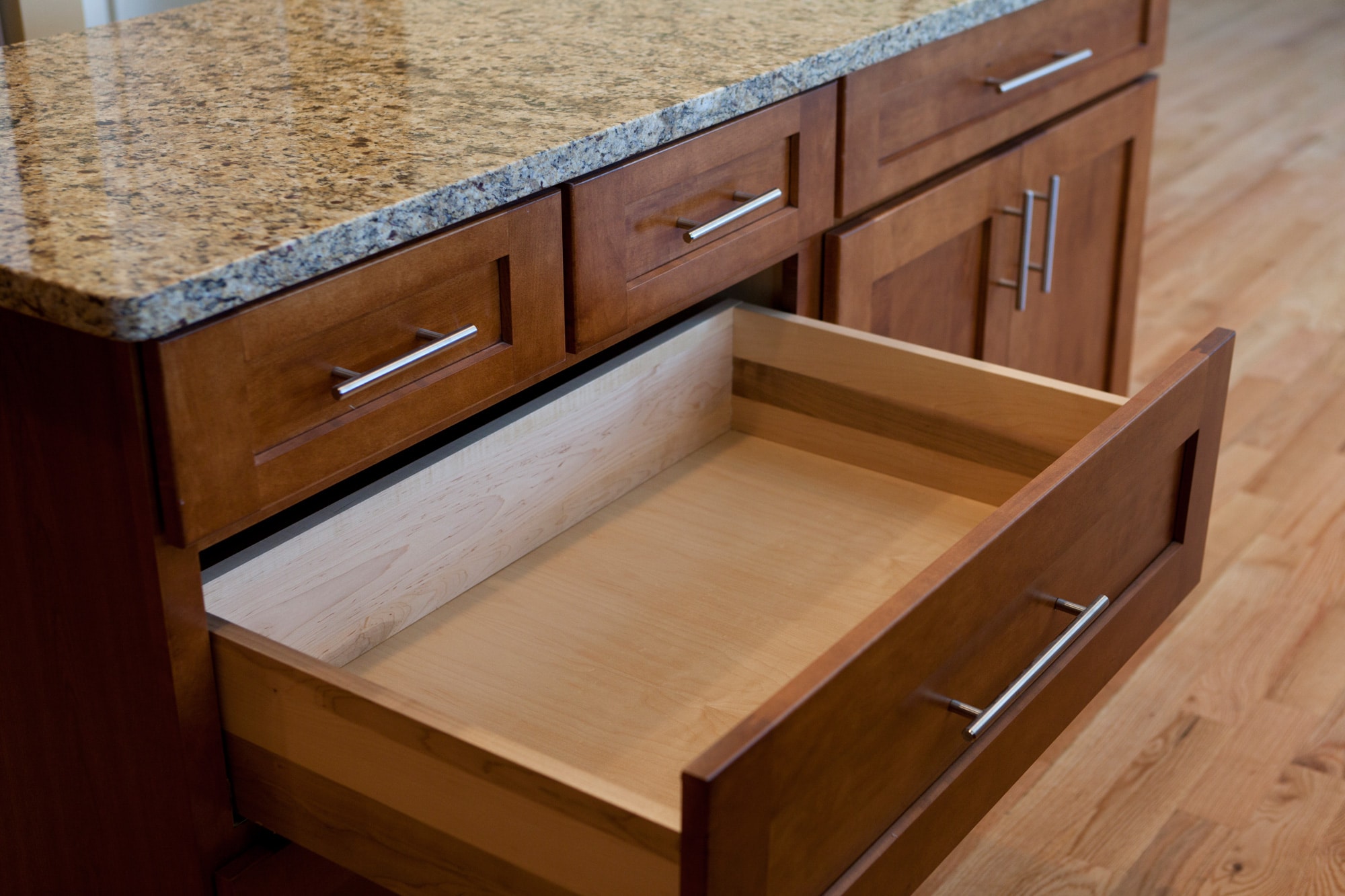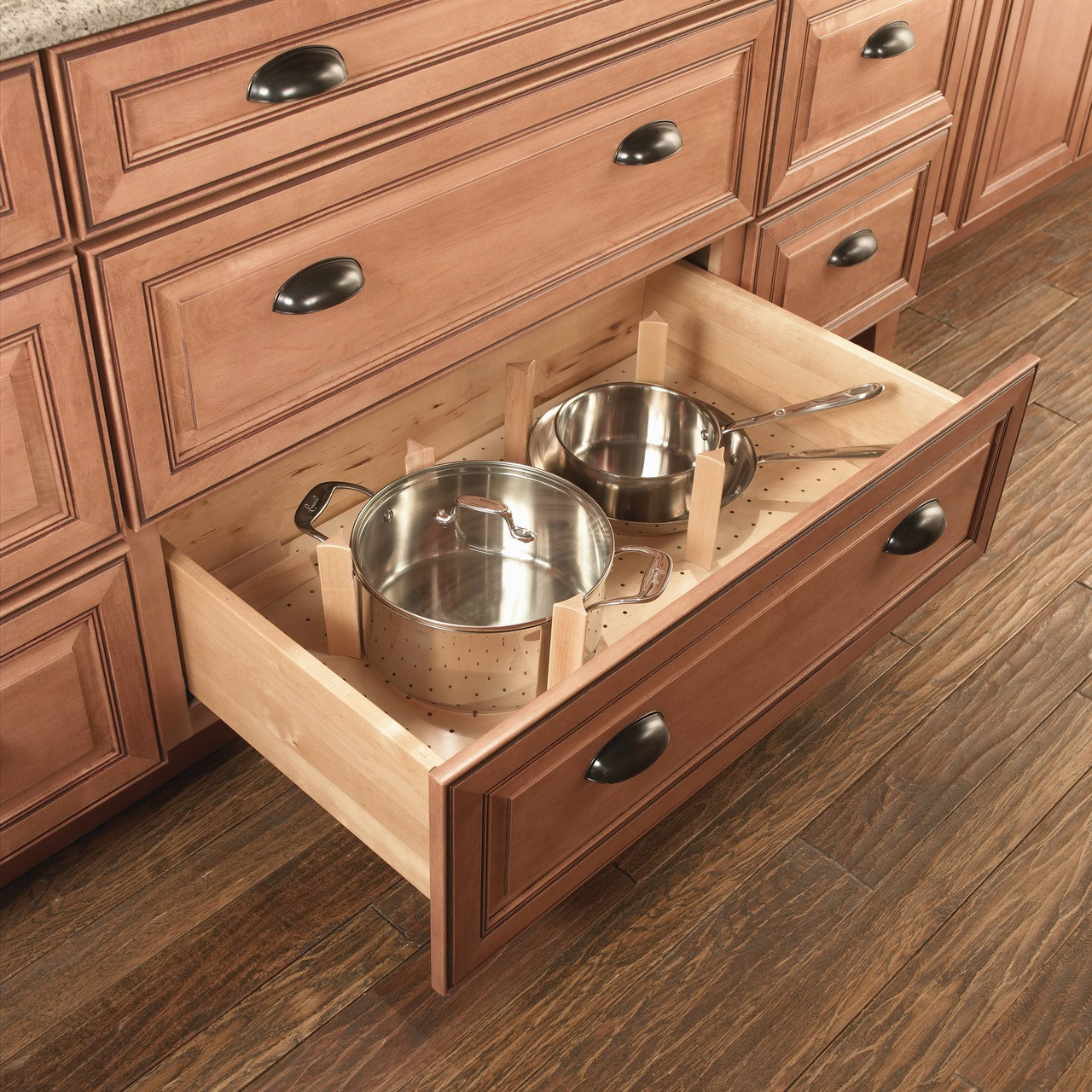Popular Wood Choices for Kitchen Cabinet Drawers: Best Wood For Kitchen Cabinet Drawers

Kitchen cabinet drawers are a vital part of any kitchen, providing essential storage space for cookware, utensils, and other kitchen essentials. When choosing the wood for your kitchen cabinet drawers, you have a variety of options, each with unique characteristics that influence their suitability for this purpose.
Popular Wood Species
The most common wood species used for kitchen cabinet drawers are:
- Maple: Known for its durability, hardness, and beautiful grain patterns, maple is a popular choice for kitchen cabinet drawers. Its light color and tight grain make it suitable for both traditional and modern kitchen designs. Maple is also relatively resistant to moisture and scratches, making it a practical choice for high-traffic areas.
- Cherry: Cherry wood is known for its warm reddish-brown color and rich grain patterns. It is a relatively soft wood, making it easier to work with and carve intricate designs. However, cherry wood is susceptible to scratches and dents, so it may require more maintenance. It also tends to darken with age, adding a vintage charm to the kitchen.
- Oak: Oak is a strong and durable wood that is known for its distinctive grain patterns and warm color. It is a popular choice for kitchen cabinets due to its resistance to moisture and scratches. Oak is also a relatively heavy wood, making it suitable for drawers that need to support heavier items.
- Alder: Alder is a softwood with a light, creamy color and a fine grain. It is a relatively affordable option that is easy to work with. Alder is known for its ability to accept stains and finishes, allowing for a wide range of customization options. However, it is not as durable as other hardwoods and may be susceptible to scratches and dents.
- Pine: Pine is a softwood that is known for its affordability and knotty grain patterns. It is a popular choice for rustic kitchen designs. Pine is a lightweight wood that is easy to work with, but it is also prone to scratches and dents. It is also not as moisture-resistant as other hardwoods.
Wood Species Comparison
| Wood Species | Cost | Durability | Moisture Resistance | Aesthetic Appeal |
|---|---|---|---|---|
| Maple | Medium | High | Good | Light color, tight grain |
| Cherry | Medium to High | Medium | Good | Warm reddish-brown color, rich grain patterns |
| Oak | High | High | Excellent | Distinctive grain patterns, warm color |
| Alder | Low | Medium | Good | Light, creamy color, fine grain |
| Pine | Low | Low | Fair | Knotty grain patterns |
Examples of Wood Species in Kitchen Cabinet Designs, Best wood for kitchen cabinet drawers
- Maple: Maple wood is often used in contemporary kitchen designs, where its light color and smooth grain provide a clean and minimalist aesthetic.
- Cherry: Cherry wood is frequently used in traditional kitchen designs, where its warm color and rich grain patterns create a sense of warmth and elegance.
- Oak: Oak wood is a versatile choice that can be used in both traditional and modern kitchen designs. Its durability and distinctive grain patterns make it a popular choice for kitchen cabinets that need to withstand heavy use.
- Alder: Alder wood is often used in kitchens with a rustic or farmhouse aesthetic. Its light color and fine grain allow it to blend seamlessly with other natural materials.
- Pine: Pine wood is commonly used in kitchens with a rustic or cottage style. Its knotty grain patterns add character and warmth to the space.
Factors to Consider When Choosing Wood for Kitchen Cabinet Drawers

Choosing the right wood for your kitchen cabinet drawers is a crucial decision that impacts both the aesthetics and functionality of your kitchen. It’s not just about picking a wood that looks good; you need to consider its durability, resistance to moisture, and overall suitability for the demands of a busy kitchen environment.
Impact of Moisture and Humidity
Moisture and humidity are major factors that can affect the longevity and appearance of your kitchen cabinet drawers. Wood, being a natural material, is susceptible to warping, cracking, and swelling when exposed to fluctuating moisture levels. Some wood species are naturally more resistant to moisture than others, but even these require proper finishes and treatments to protect them.
- Hardwoods like oak, maple, and cherry are known for their durability and resistance to moisture. However, they still require proper sealing and finishing to prevent damage from spills and humidity.
- Softwoods like pine and cedar are more porous and susceptible to moisture damage. They may be suitable for drawers that are not exposed to frequent moisture, but they require more careful maintenance and sealing.
Maintenance and Care of Kitchen Cabinet Drawers

Proper care and maintenance of your kitchen cabinet drawers are essential for preserving their beauty, functionality, and longevity. Regular cleaning, finishing, and repair techniques help prevent damage and ensure your drawers remain in top condition for years to come.
Cleaning Kitchen Cabinet Drawers
Keeping your kitchen cabinet drawers clean is crucial for maintaining their hygiene and appearance. Cleaning involves removing dirt, food particles, and spills, which can accumulate over time.
- Regular Dusting: Dusting your drawers regularly with a soft cloth helps prevent the accumulation of dust and debris. This helps keep your drawers looking clean and free of allergens.
- Spot Cleaning: For spills or stains, use a damp cloth with mild soap and water to clean the affected area. Avoid harsh chemicals or abrasive cleaners that can damage the wood’s finish.
- Deep Cleaning: For a thorough cleaning, you can remove the drawer from the cabinet and clean it thoroughly. Use a vacuum cleaner with a brush attachment to remove dust and debris from the corners and crevices.
Applying Finishes and Sealants
Applying finishes and sealants to your kitchen cabinet drawers helps protect them from moisture, stains, and scratches. The type of finish you choose will depend on the type of wood and the desired look.
- Oil Finishes: Oil finishes, such as tung oil or linseed oil, penetrate the wood, providing a natural look and enhancing the grain. They offer good protection against moisture and stains but require regular maintenance.
- Varnish Finishes: Varnish finishes create a hard, durable coating that protects the wood from scratches and moisture. They come in different sheens, from matte to gloss, and are available in both oil-based and water-based formulas.
- Lacquer Finishes: Lacquer finishes are fast-drying and provide a hard, durable coating that resists scratches and moisture. They offer a high-gloss finish that enhances the wood’s natural beauty.
Repairing Damaged Kitchen Cabinet Drawers
Over time, your kitchen cabinet drawers may experience minor damage, such as scratches, dents, or warping. These can be repaired using simple techniques to restore the drawers’ appearance and functionality.
- Scratch Repair: For minor scratches, you can use a wood filler to match the color of the wood. Apply the filler with a putty knife, smooth it out, and let it dry completely. Sand the area with fine-grit sandpaper to blend the filler with the surrounding wood.
- Dent Repair: For dents, you can use a wood filler or a heat gun to gently raise the dented area. If using a heat gun, be careful not to apply too much heat, as this can damage the wood. After raising the dent, sand the area smooth and apply a finish to match the surrounding wood.
- Warping Repair: Warping can be caused by moisture or changes in temperature. If the warping is minor, you can try to flatten the drawer by placing it under a heavy weight. For more severe warping, you may need to consult a professional woodworker.
Inspecting Kitchen Cabinet Drawers
Regular inspections of your kitchen cabinet drawers are essential for early detection and prevention of issues such as warping, cracking, or insect infestation.
- Visual Inspection: Look for any signs of damage, such as scratches, dents, or warping. Also, check for any signs of insect infestation, such as frass (wood dust) or holes in the wood.
- Moisture Check: Check for any signs of moisture or water damage, such as discoloration, swelling, or mold. If you find any signs of moisture damage, it’s important to address the problem immediately to prevent further damage.
- Hardware Check: Inspect the drawer slides and hardware for any signs of wear or damage. Replace any worn or damaged hardware as needed.
Best wood for kitchen cabinet drawers – Choosing the right wood for kitchen cabinet drawers is a big decision, as it impacts both durability and aesthetics. While solid wood options like maple or cherry are classic choices, exploring alternatives like wood veneer faced architectural cabinets can offer a stunning look with cost-effectiveness.
These cabinets feature a thin layer of real wood veneer on top of a sturdy core, providing a beautiful finish without the high price tag of solid wood. When deciding on the best wood for your drawers, consider your budget, desired style, and the level of maintenance you’re willing to commit to.
Choosing the right wood for your kitchen cabinet drawers is crucial for both durability and aesthetics. While I’m currently obsessed with finding the perfect small egg chair for my bedroom , I know I need to prioritize practicality in the kitchen.
Hardwoods like maple and cherry are known for their strength and resistance to scratches, making them ideal for high-traffic areas like the kitchen.
